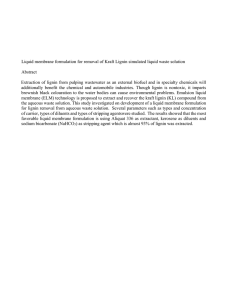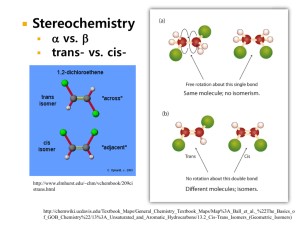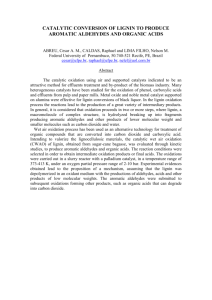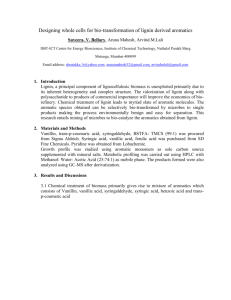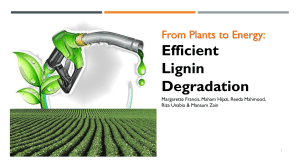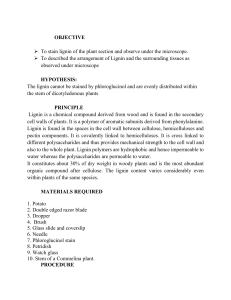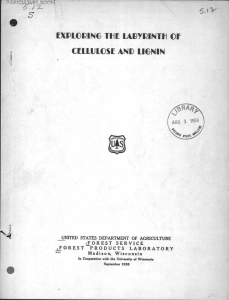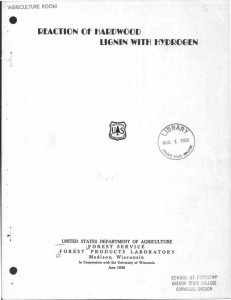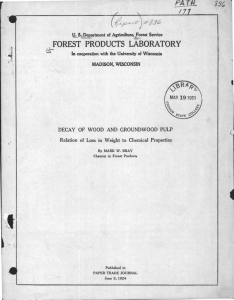RICULTURE RCO-A DESCRIPTION OF THE FOREST PRODUCTS LABORATORY' S
advertisement
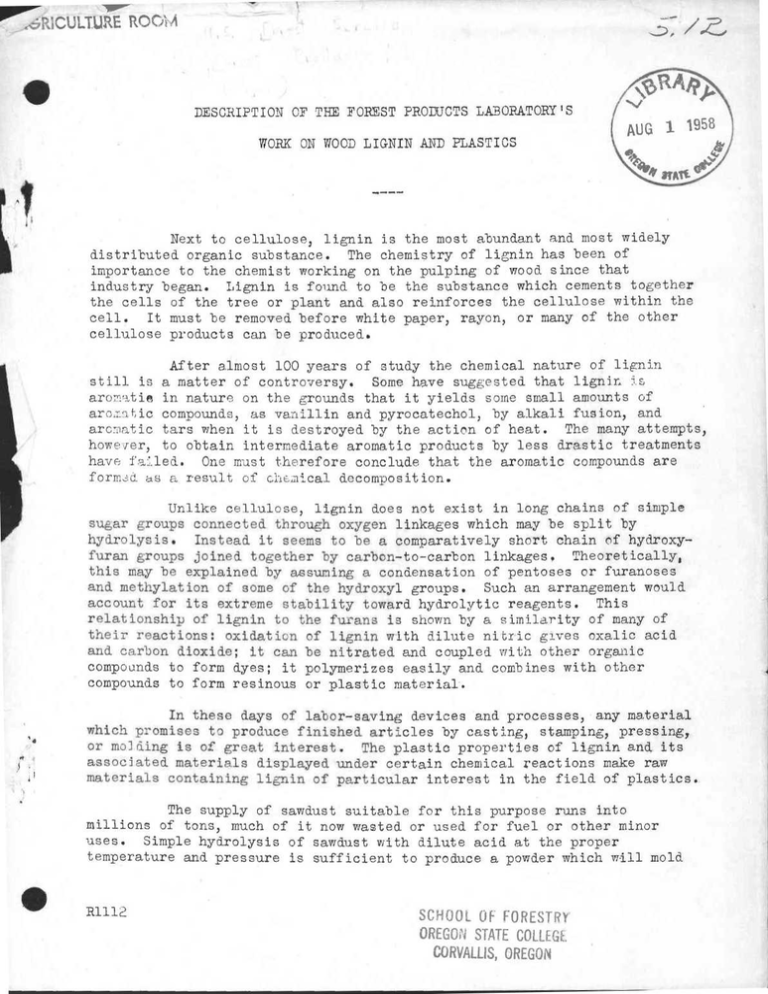
RICULTURE RCO-A DESCRIPTION OF THE FOREST PRODUCTS LABORATORY' S Next to cellulose, lignin is the most abundant and most widel y distributed organic substance . The chemistry of lignin has been o f importance to the chemist working on the pulping of wood since tha t industry began . Lignin is found to be the substance which cements togethe r the cells of the tree or plant and also reinforces the cellulose within th e cell . It must be removed before white paper, rayon, or many of the othe r cellulose products can be produced . After almost 100 years of study the chemical nature of ligni n still is a matter of controversy . Some have suggested that lignin s aromatic in nature on the grounds that it yields some small amounts o f aromatic compounds, as vanillin and pyrocatechol, by alkali fusion, an d aromatic tars when it is destroyed by the action of heat . The many attempts , however, to obtain intermediate aromatic products by less drastic treatment s have failed . One must therefore conclude that the aromatic compounds ar e forme as a result of chemical decomposition . Unlike cellulose, lignin does not exist in long chains of simpl e sugar groups connected through oxygen linkages which may be split b y hydrolysis . Instead it seems to be a comparatively short chain of hydroxyfuran groups joined together by carbon-to-carbon linkages . Theoretically , this may be explained by assuming a condensation of pentoses or furanose s and methylation of some of the hydroxyl groups . Such an arrangement woul d account for its extreme stability toward hydrolytic reagents . Thi s relationship of lignin to the furans is shown by a similarity of many o f their reactions : oxidation of lignin with dilute nitric gives oxalic aci d and carbon dioxide ; it can be nitrated and coupled with other organi c compounds to form dyes ; it polymerizes easily and combines with othe r compounds to form resinous or plastic material . ' 4 In these days of labor-saving devices and processes, any materia l which promises to produce finished articles by casting, stamping, pressing , or molding is of great interest . The plastic properties of lignin and it s associated materials displayed under certain chemical reactions make ra w materials containing lignin of particular interest in the field of plastics . The supply of sawdust suitable for this purpose runs int o millions of tons, much of it now wasted or used for fuel or other mino r uses . Simple hydrolysis of sawdust with dilute acid at the prope r temperature and pressure is sufficient to produce a powder which will mol d R1112 SCHOOL OF FORESTR Y OREGON STATE COLLEGE. CORVALLIS, OREGON to a hard, black, dense material not far different in appearance an d properties from other well-known molding materials at only a fraction o f their cost . A much . better material can be obtained by incorporating 6 to S percent aniline and 6 to percent furfural in the mixture before pressing . This plastic causes less trouble in sticking to the mold and can be presse d at a lower temperature . It has a density of approximately 1 .35 to 1 .4 1 and a machinability very much like hard rubber . Its modulus of rupture, a s determined by static bending, is approximately 6,000 pounds at 4 percen t moisture content, an equilibrium moisture content acquired at 30 percen t relative humidity . The electrical resistance varies with the moistur e content ; at 30 percent humidity it is of the order of 5 x 10 11 ohms pe r square centimeter . After 24 hours' soaking in water it will take u p between 1 and 2 percent of its weight, but only 0 .2 to 0 .)+ percent i n 60 percent atmospheric humidity for the same time . The maximum swellin g in length and width, after soaking for 100 days, is less than 1,5 percent . s Preliminary estimates indicate that this molding powder can b e made for 2 to 3 cents a pound, the increase in cost over that of sawdus t being due to added chemicals . p A third modification is made by digesting sawdust with anilin e and compounding the finished material with furfural . This material flow s better in the mold and has a better finish than the previously describe d pla,ti .cs . It appears to be somewhat weaker, but strong enough for th e purposes for which plastics are generally used . It would cost about 5 cent s per pound . December 3, 1936 . Forest Products Laboratory , Madison, Wisconsin . I R1112 -2 -
